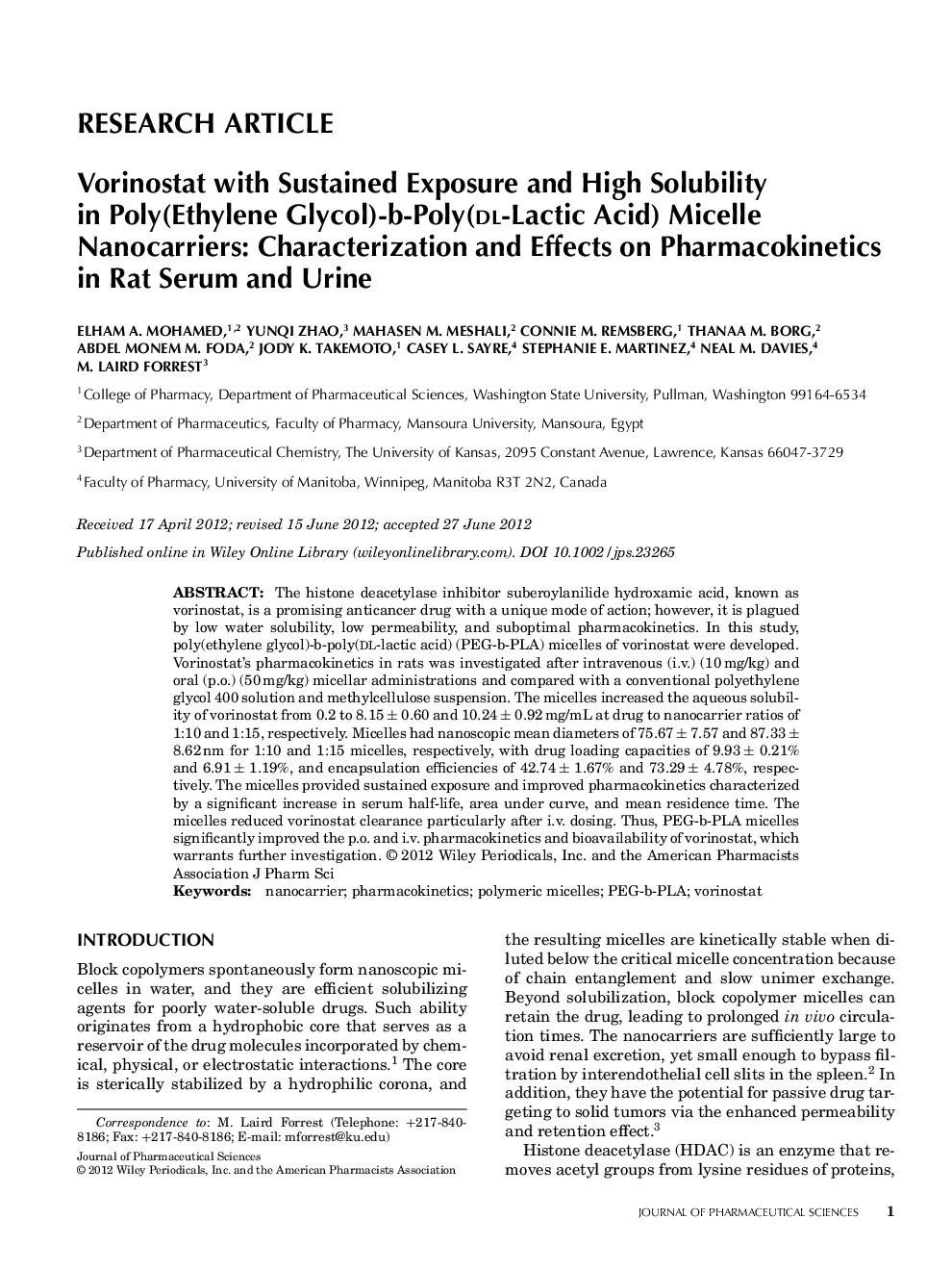| Article ID | Journal | Published Year | Pages | File Type |
|---|---|---|---|---|
| 2484886 | Journal of Pharmaceutical Sciences | 2012 | 12 Pages |
Abstract
The histone deacetylase inhibitor suberoylanilide hydroxamic acid, known as vorinostat, is a promising anticancer drug with a unique mode of action; however, it is plagued by low water solubility, low permeability, and suboptimal pharmacokinetics. In this study, poly(ethylene glycol)âbâpoly(dlâlactic acid) (PEGâbâPLA) micelles of vorinostat were developed. Vorinostat's pharmacokinetics in rats was investigated after intravenous (i.v.) (10âmg/kg) and oral (p.o.) (50âmg/kg) micellar administrations and compared with a conventional polyethylene glycol 400 solution and methylcellulose suspension. The micelles increased the aqueous solubility of vorinostat from 0.2 to 8.15â± 0.60 and 10.24â± 0.92âmg/mL at drug to nanocarrier ratios of 1:10 and 1:15, respectively. Micelles had nanoscopic mean diameters of 75.67â± 7.57 and 87.33â± 8.62ânm for 1:10 and 1:15 micelles, respectively, with drug loading capacities of 9.93â± 0.21% and 6.91â± 1.19%, and encapsulation efficiencies of 42.74â± 1.67% and 73.29â± 4.78%, respectively. The micelles provided sustained exposure and improved pharmacokinetics characterized by a significant increase in serum halfâlife, area under curve, and mean residence time. The micelles reduced vorinostat clearance particularly after i.v. dosing. Thus, PEGâbâPLA micelles significantly improved the p.o. and i.v. pharmacokinetics and bioavailability of vorinostat, which warrants further investigation.
Related Topics
Health Sciences
Pharmacology, Toxicology and Pharmaceutical Science
Drug Discovery
Authors
Elham A. Mohamed, Yunqi Zhao, Mahasen M. Meshali, Connie M. Remsberg, Thanaa M. Borg, Abdel Monem M. Foda, Jody K. Takemoto, Casey L. Sayre, Stephanie E. Martinez, Neal M. Davies, M. Laird Forrest,
